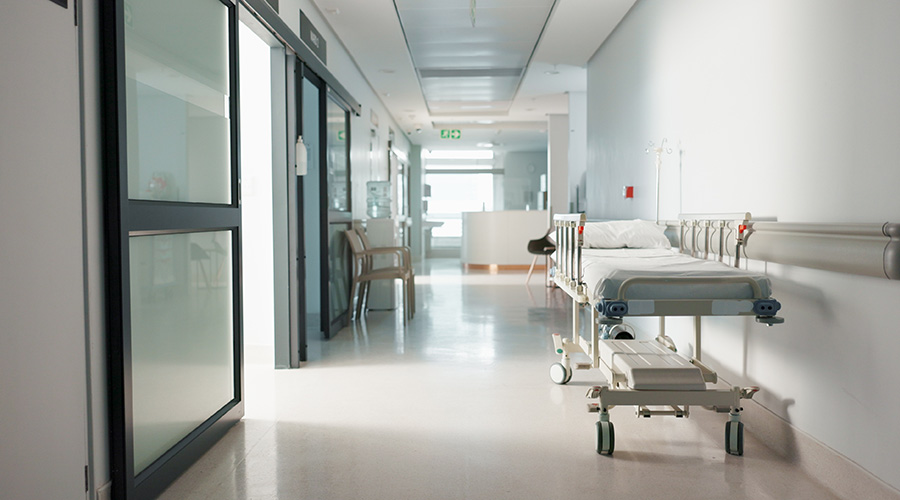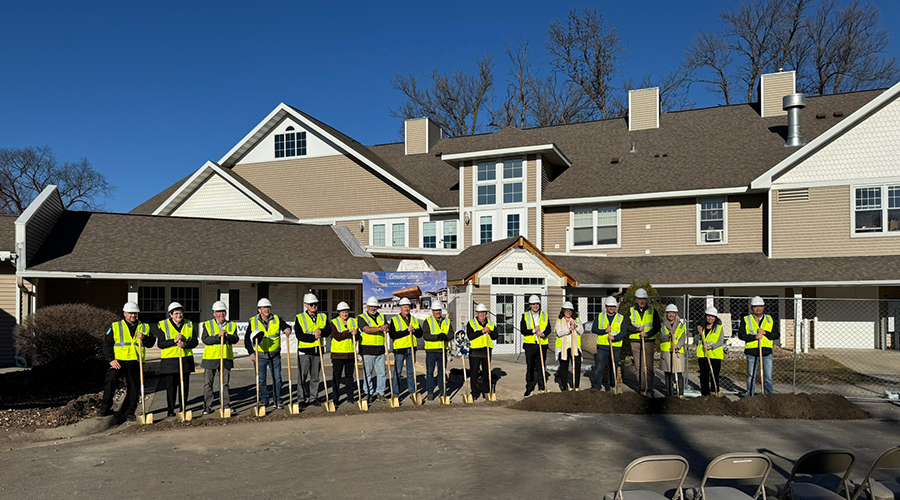As healthcare organizations continue to move toward more sustainable business models, with emphasis placed on energy efficiency and environmental stewardship, the popularity of installing vegetative roofs is likely to grow.
As healthcare organizations continue to move toward more sustainable business models, with emphasis placed on energy efficiency and environmental stewardship, the popularity of installing vegetative roofs is likely to … grow.
The benefits of using vegetative roofs in healthcare facilities can be divided into three categories: economic, environmental and healing.
Economic
Temperatures on an average low-slope roof can reach more than 170° F, according to
Healthcare Development magazine. This kind of heat not only speeds the aging process of the roof membrane, but it also affects building energy demands.
This is particularly worrisome in healthcare facilities as American hospitals are spending more than $10 billion on energy annually. The facilities are energy-intensive, and costs often equal between 1 and 3 percent of a hospital’s operating budget, according to a recent
study by The Commonwealth Fund.
Vegetative roofs have been shown to significantly decrease rooftop temperatures, resulting in an energy cost savings. A quantitative example of savings can be found at the headquarters for the American Society of Landscape Architects (ASLA) in Washington, D.C.
Maintenance Solutions reports, in 2006 ASLA decided to showcase what it could offer in green roofing by replacing the roof of its own building with a
sustainable vegetative roof. Now seven years later, the organization reports a 10 percent energy cost savings during the winter (due to the roof’s ability to insulate from the cold) and a 3 percent savings during the summer.
ASLA also found the temperature on the green roof to be as much as 43.5 degrees cooler than the conventional roofs on neighboring buildings, even on the hottest summer days.
Environmental
In addition to cost savings, vegetative roofs have been shown to have significant environmental benefits. They can aid in the management of storm water, clean pollution from the water and reduce the “heat island” effect.
Low slope roofs contribute to what the
United States Environmental Protection Agency terms a “heat island”— an urban area that is hotter than nearby rural areas. According to the EPA, the average temperature of a city of 1 million people or more can be between 1.8 and 5.4°F warmer than its surroundings and that difference can be as high as 22°F in the evenings.
“Heat islands can affect communities by increasing summertime peak energy demand, air conditioning costs, air pollution and greenhouse gas emissions, heat-related illness and mortality, and water quality, ” according to the EPA website.
By installing a vegetative roof — and thus lowering rooftop temperature — healthcare facilities can reduce their contribution to the heat island effect.
The green roof also aids in the management of storm water. According to Healthcare Development magazine, the plants and soil absorb, clean and evaporate storm water before it reaches the sewer system.
ASLA, in addition to tracking its energy use and green rooftop temperatures, also installed monitoring equipment to track storm-water runoff and water quality. It compared this data with data from the conventional roof on the building next door, Maintenance Solutions reports.
The
article states: “During a 10–month monitoring period, ASLA found the roof prevented 27,500 gallons of storm-water — nearly 78 percent of all precipitation hitting the roof — from flowing into the district's sewer and storm-water system. Water-quality testing also showed the runoff from the roof contains fewer pollutants, including nitrogen, than typical runoff.”
Healing
While the economic and environmental benefits of vegetative roofs are arguably important to all commercial sectors, it is the healing component that is perhaps moving the bar for healthcare facilities.
With the popularity of evidence-based design, there have been an increased number of studies on how the physical space affects the patient experience and health outcomes.
An article in
Facility Care magazine suggests the healing power of green space is the primary advantage to installing a vegetative roof in healthcare facilities. The article cites the research of Robert Ulrich of Texas A&M. Ulrich compared the recovery time of surgical patients with a window view of a brick wall to those with a view of green space. The patients who viewed the green space had fewer postsurgical complications, used less pain medication and had hospital stays nearly 9 percent shorter than those looking at the brick wall.
The article goes on to cite additional studies that suggest the healing benefits of green space are enhanced when patients have physical access to it, as in a healing rooftop garden. The gardens offer patients the opportunity for social interaction with visitors, staff and patients, which has been proven to lower stress and stimulate natural healing.
The benefits of a vegetative roof in healthcare facilities span from economic and environmental to healing.

 Healthcare Is the New Retail
Healthcare Is the New Retail Bridgeway Behavioral Health Services Launches Campaign to Renovate Health Center
Bridgeway Behavioral Health Services Launches Campaign to Renovate Health Center Ground Broken for New North Dakota State Hospital
Ground Broken for New North Dakota State Hospital AI Usage for Healthcare Facilities
AI Usage for Healthcare Facilities Ground Broken on Pelican Valley Senior Living Modernization Project
Ground Broken on Pelican Valley Senior Living Modernization Project